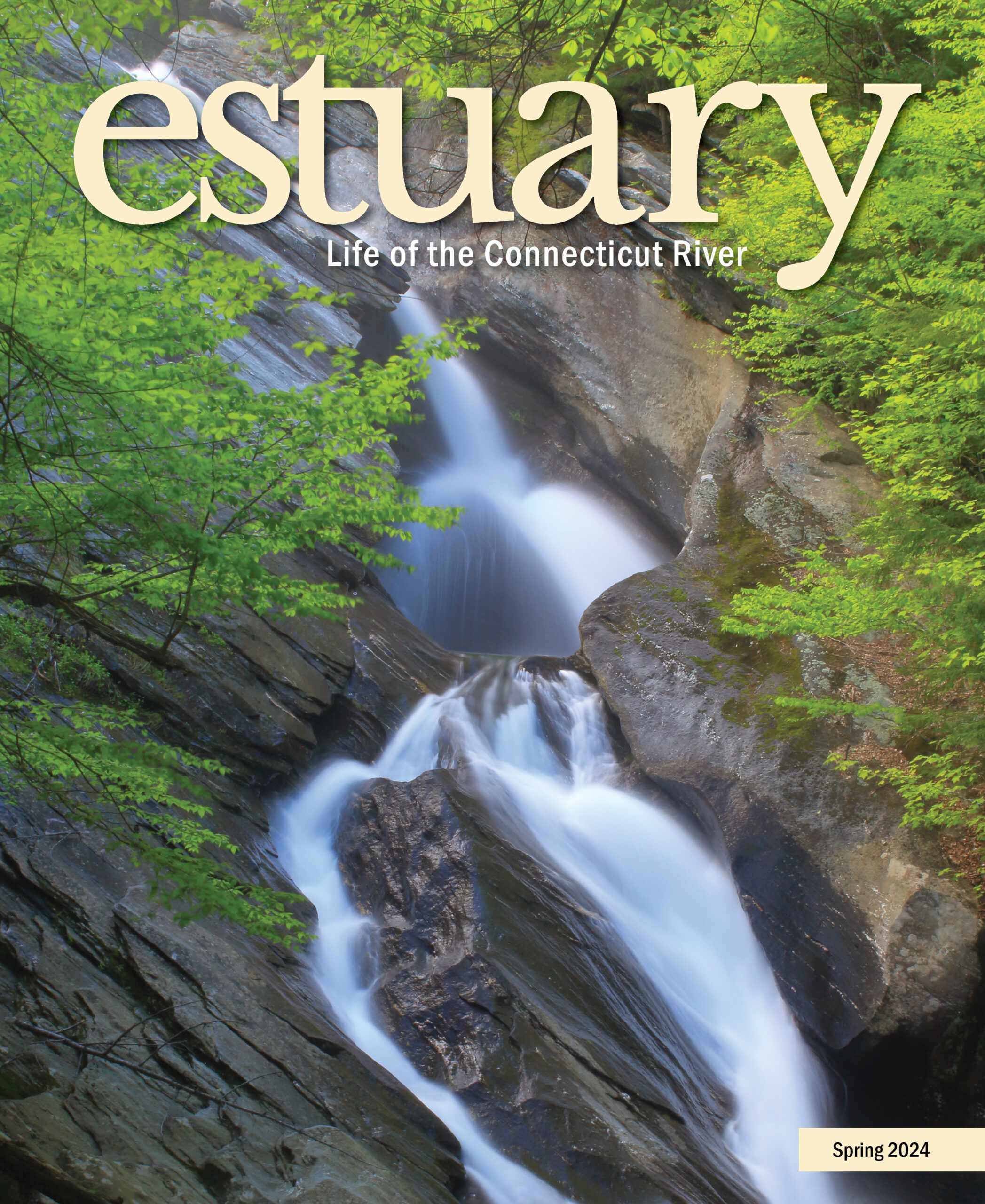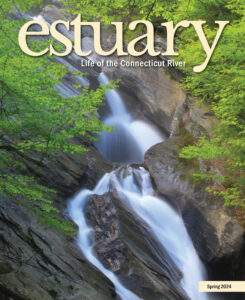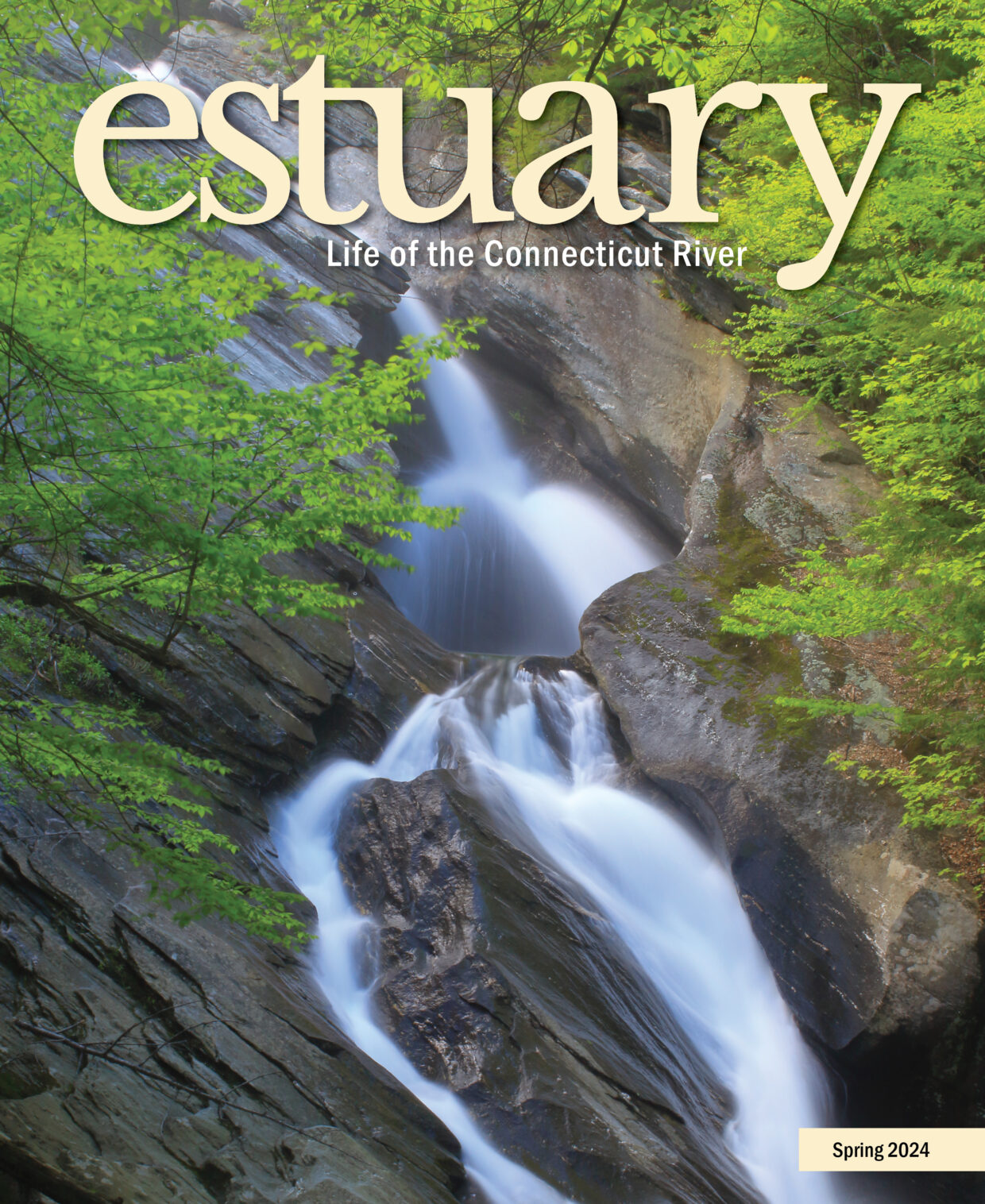 This article appears in the Spring 2024 issue
This article appears in the Spring 2024 issue

As Estuary begins its fifth year of publication, it seems fitting to reflect on what has taken place and what lies ahead.
This is our 17th issue of the magazine. We have now published over 200 articles about the Connecticut River watershed. Many of our subscribers have every copy; all of our subscribers are entitled to access the electronic archives—every story has been adapted to our “library” for research, education, and posterity, and all filed by category: Science & Conservation, Wildlife, History, Recreation, Lifestyle, and People. We have tried to make every article understandable by, and interesting to, lay readers, young and old.
From a business standpoint, the start of the magazine was anything but auspicious. Our first issue arrived in mailboxes around March 1, 2020; the prospects were exciting. Our hope was to create something that was worth $40 per year, and in time, we planned to move the business into a situation where it could thrive into perpetuity. Subscriptions were rolling in, and even though our numbers were understandably small, we had good initial success selling advertisements with several anchor supporters who shared the dream. We began to receive wonderful reader feedback and testimonials. Was it just our imagination, or had we created a certain “buzz”?
A few days later the World Health Organization declared an international pandemic. Organizational and financial chaos ensued everywhere; an upstart start-up magazine was not spared. Our grand opening gala was cancelled. Promotional gatherings were cancelled. In-person meetings vanished from the calendar. Our anticipated expenses for startup to breakeven were, let’s say, X, but they quickly rose to 2X.
That is mostly behind us as we enter 2024. Dare I say it, we now have a favorable financial outlook for the foreseeable future. In the year 2023, the magazine finally reached breakeven, albeit with some key volunteer positions and contributed support. Organizationally, the magazine is positioned better for the long term, having been acquired by the nonprofit Watershed Fund. Almost as soon as this was announced, unsolicited tax-deductible donations began to arrive.
Importantly, in December of last year, the Watershed Fund received a three-year grant to establish a collaborative among the hundreds of nonprofits and government entities, all working for a better environmental future for the Connecticut River watershed. In addition to The Watershed Fund, this project’s founding partners and leaders are Mass Audubon, Connecticut River Conservancy, and Audubon Vermont. Operating mainly through the previously all-volunteer Friends of Conte, comprised of more than 70 environmental institutions operating in the watershed, this new collaborative seeks to be competitive in securing federal and private funds to accomplish important work beyond the reach of any single entity operating alone.
Why do we need a collaborative, you ask?
I recently met a person whose entire 30-some-year business career was related to the environment in New England. I asked, “If one had a billion dollars to spend on the Connecticut River watershed, how do you think it should be spent?” The answer: “Buy land.” To be sure, land protection is an important focus of many of the more than 100 land trusts up and down the watershed.
But what about the birds, declining in North America by one third in the past 70 years? What about the fish and other aquatic wildlife, some making a modest comeback as evidenced by fish counts at certain points such as the Holyoke Dam? What about invasive plants, including the recently-encountered, unique strain of Hydrilla that is choking marinas and wetland areas in the lower end of the Connecticut River? What about the effects of rising temperatures and the concurrent violent weather and flooding that threatens to leave much of the Vermont landscape in broken roads and arid ruts? Because of more rainfall over a short period, new areas are being designated as flood plains in need of reforestation involving the planting of trees by the tens of thousands. Several thousand culverts in the watershed are no longer adequate for the weather anticipated in the future.
I could go on…and will…but just for a bit. In the past, cities along the Connecticut River turned their backs on the once-polluted, smelly confluence. Now that the water is relatively clean, several cities are trying to reverse course and develop parks and recreational sites along the shores. They recognized that many citizens living within the watershed have been deprived of access to the benefits of the out-of-doors and the positive aspects of river recreation because of where they live.
The decline in habitat, both terrestrial and aquatic, is listed as the most frequent cause of loss of wildlife. A major thrust for the watershed in the long term must be vastly greater education about our environment for secondary school and college students, and promoting greater awareness about the environmental issues among the more than two million citizens living in the watershed.
The long-term goal? Yet another transformational change in attitudes about our precious natural resources. Everyone who is interested, with and without a background in science, should be able to become informed about, and contribute to, our environment.
If we had a billion to invest in the watershed, we might purchase some land, but mostly we would invest in the land…and in the water!


Dick Shriver
Publisher & Editor

